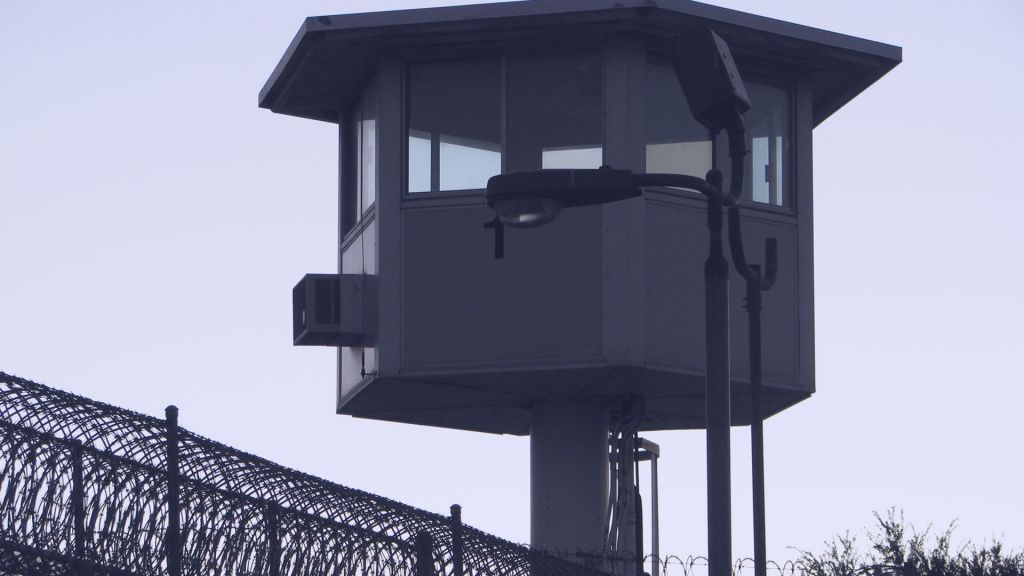
The Independent Lens film The Prison in Twelve Landscapes examines the effect prisons have on the communities around them in both positive and negative ways. Prisons can stimulate the economy and create jobs, but they also loom monolithically over our lives.
- The United States locks up a lot of people. Our prison population rate of roughly 700 per 100,000 is the second-highest of 222 countries tracked by the Institute for Criminal Policy Research. Nearly one out of every 100 American adults is behind bars.
- Private correctional facilities were a $4.8 billion industry in 2014, with profits of $629 million, according to market research firm IBISWorld.
Here are some of the more striking stats, facts, and figures related to prisons, both nationally and in the regions across the country explored in the film.
Wheelwright, Kentucky
As mentioned by the curator of the Wheelwright Public Library and History Museum, seen in The Prison in 12 Landscapes, the town of Wheelwright was founded by the Elkhorn Coal Co. in 1916, and had always been completely economically dependent on the coal industry. When that dried up, the local economy became entwined with the nearby prison instead.
Upon its opening in 1981, the 600-bed Otter Creek Correctional Center created nearly 200 jobs in one of the South’s poorest communities. Eventually, reports of misconduct plagued the facility. From a Lexington Herald-Leader editorial:
Allegations of inmate abuse and mistreatment produced a riot at CCA’s Lee Adjustment Center in 2004. At the company’s Otter Creek Correctional Center in Wheelwright in Floyd County, female prisoners were sexually abused by prison staff amid lapses in medical care and security. Hawaii pulled its female inmates from Otter Creek in 2009 in response to the evidence of sexual abuse and the next year Kentucky did too.
The city of Wheelwright, Kentucky was hit hard: “Officials said over 170 jobs were lost, although the owners of the prison, the Corrections Corporation of America, pledged to relocate as many employees as possible to other facilities.”
Attica, New York
Attica, New York, home to one of the most infamous correctional facilities in the U.S., was the site of the 1971 riot which resulted in 43 deaths (33 of those were convicts and ten were correctional officers and civilian employees).
The entire population of the town of Attica is 7,702 [2010 census], while the facility’s population in 2011 was 2,152 inmates. So the town is only about 13 times bigger than the number of employees at the prison.
Prison population became a hot topic a few years ago as communities battled for the rights to consider prisoners part of their population, even though prisoners are usually not local otherwise, and not allowed to vote.
As a side note about the New York State prison system in general:
The state has slashed its inmate population by more than a quarter since its peak in 1999, from 71,538 to roughly 53,000 today, but the state’s corrections department budget has swollen by nearly a one-third in that time to close to $3 billion.
Marin County, California
In California, when wildfires ravage hillsides dried by the summer heat, prisoners are recruited to work as firefighters.
Fire protection in California is hugely dependent on the inmate firefighter program, run jointly by the California Department of Corrections and Rehabilitation (CDCR) and the California Department of Forestry and Fire Protection (Cal Fire). In total, the Cal Fire — the state’s emergency fire response program — has about 10,000 firefighters on the ground combating wildfire — which means that almost half of Cal Fire firefighters in California are inmate firefighters. Unlike civilian volunteer firefighters with Cal Fire, who make minimum wage for their work ($9 an hour in California), inmates are paid $2 an hour when they are on the lines fighting fires.
That may sound like nothing, though it’s still more than prison jobs pay, believe it or not.
“The collaboration with Cal Fire apparently saves the state of California roughly $80 million a year,” writes Julia Lurie in Mother Jones. Prisoners participating in the Cal Fire program are “typically low-level felons who volunteered to participate and have demonstrated good behavior in prison.” No, if a prisoner was convicted of arson, they are not allowed to apply.
St. Louis County, Missouri
St. Louis County, Missouri is a complicated place. It includes the suburb of Ferguson, where unarmed black teenager Michael Brown was shot and killed by a white police officer. It’s also where this woman, seen in Prison in Twelve Landscapes, was incarcerated for failure to pay a garbage can misdemeanor:
And as with many other American municipalities, the county profits from both poverty and crime, as detailed in this eye-opening Washington Post piece by Radley Balko [emphasis ours]:
Some of the towns in St. Louis County can derive 40 percent or more of their annual revenue from the petty fines and fees collected by their municipal courts. A majority of these fines are for traffic offenses, but they can also include fines for fare-hopping on MetroLink (St. Louis’s light rail system), loud music and other noise ordinance violations, zoning violations for uncut grass or unkempt property, violations of occupancy permit restrictions, trespassing, wearing “saggy pants,” business license violations and vague infractions such as “disturbing the peace” or “affray” that give police officers a great deal of discretion to look for other violations. The ArchCity Defenders found a large group of people outside the courthouse in Bel-Ridge who had been fined for not subscribing to the town’s only approved garbage collection service. They hadn’t been fined for having trash on their property, only for not paying for the only legal method the town had designated for disposing of trash.

